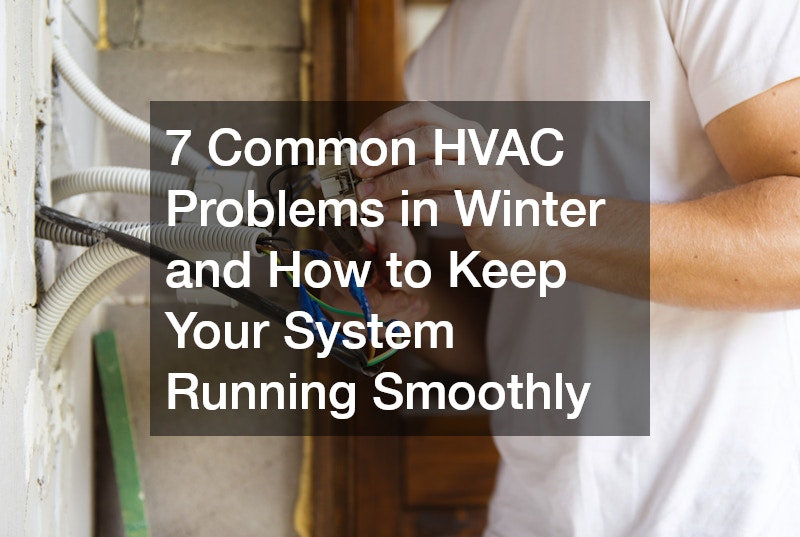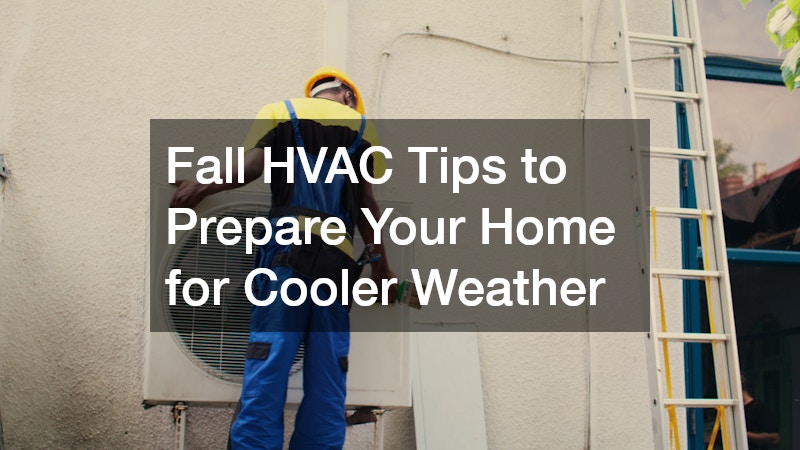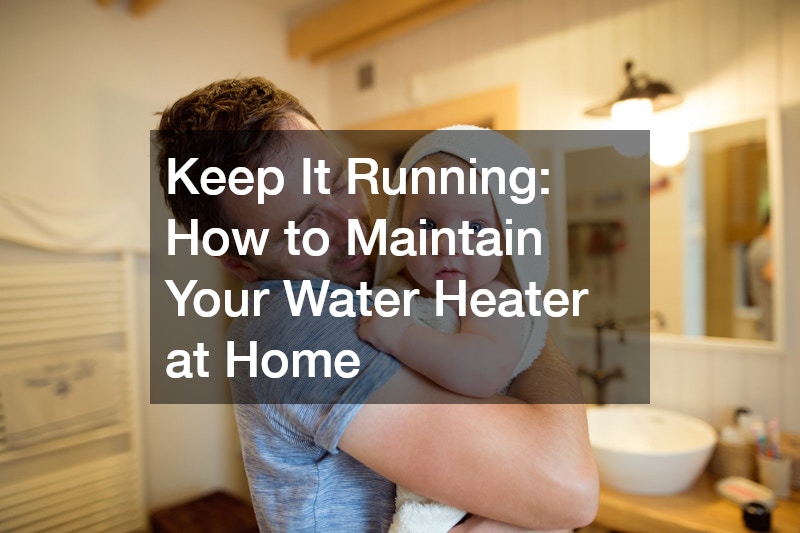As winter sets in, keeping your HVAC system running smoothly becomes all the more important. Cold temperatures can put extra strain on your system, and without proper maintenance, you may encounter common issues that could lead to discomfort, costly repairs, and system breakdowns. The good news is that many HVAC problems can be avoided with proactive care and attention. In this article, we’ll explore seven common HVAC issues that arise during winter and provide tips on how to keep your system running efficiently.
The Importance of HVAC Maintenance in Winter
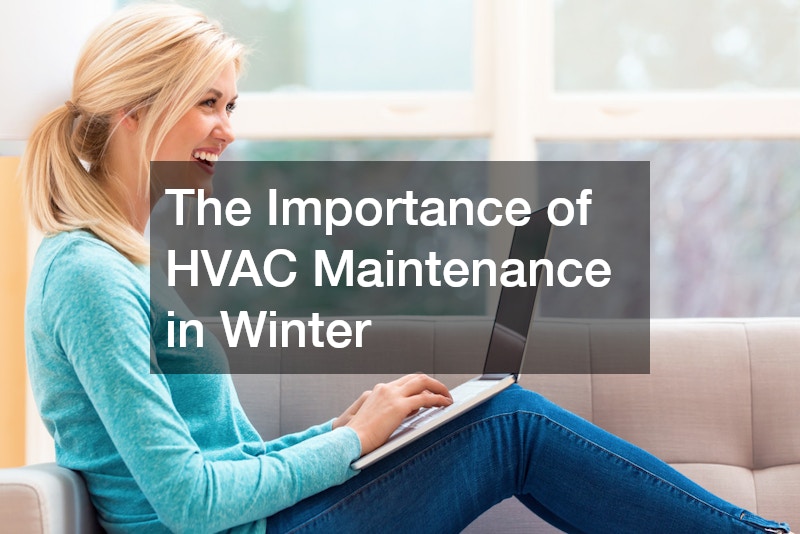
Before diving into the specific problems, it’s important to understand why HVAC maintenance is so crucial during the colder months. In winter, your heating system works harder than ever to maintain comfort inside your home. Extreme temperatures and prolonged use can lead to wear and tear, making your system more vulnerable to breakdowns. Regular maintenance helps prevent these issues by ensuring your system is in peak condition and addressing small problems before they become bigger, more expensive ones.
By maintaining your HVAC system, you’re not only protecting its longevity but also optimizing its energy efficiency. An efficient system consumes less energy, reducing your utility bills and contributing to a more sustainable home. So, let’s look at the common problems you might face during winter and how to keep them at bay.
1. Frozen Pipes and Coils
Frozen pipes and coils are one of the most serious HVAC issues during winter. When temperatures drop below freezing, the water in your pipes or the refrigerant in your HVAC system’s evaporator coils can freeze. Frozen pipes can burst, causing water damage, while frozen coils can prevent your system from heating properly.
How to Prevent It
Insulate Pipes and Coils:
Ensure that any exposed pipes, especially those in unheated areas like attics or basements, are properly insulated. This keeps the water inside the pipes from freezing in the first place.
Maintain Indoor Temperature:
If you plan on leaving your home unoccupied for an extended period, make sure the thermostat is set to at least 55°F (13°C) to prevent freezing.
Regular Inspections:
Have your HVAC technician inspect the evaporator coils before winter. If they detect any damage or signs of wear, it’s best to replace them before they cause any system malfunctions.
Seal Drafts and Gaps:
Check for gaps and drafts around windows, doors, and vents, especially in areas where pipes or coils are located. Sealing these gaps can help maintain a stable temperature in these vulnerable areas.
Install Heat Tape:
Consider using heat tape or cable along exposed pipes in especially cold areas. This will provide extra warmth to keep the pipes from freezing.
Leave Cabinet Doors Open:
If you have pipes under sinks in cabinets, especially near exterior walls, leave the cabinet doors open to allow warm air to circulate around the pipes during extreme cold spells.
What to Do If It Happens
If you notice frozen coils or pipes, it’s important to act quickly to prevent further damage. Turn off your HVAC system and let the ice thaw naturally. Never attempt to thaw frozen coils or pipes with a direct heat source like a blowtorch, as this can cause damage. If the issue persists, contact a professional technician immediately. HVAC repairs may be necessary to address the issue. If the damage is severe, HVAC replacement may be required to restore your system to optimal performance. A technician can assess the damage and provide the best solution to avoid long-term issues.
2. Dirty or Clogged Air Filters

Air filters are essential components that trap dust, dirt, and other particles to prevent them from circulating inside your home. Over time, these filters can become clogged, especially during the winter months when your heating system is running more frequently. Clogged filters can restrict airflow, reducing your system’s efficiency and even leading to system malfunctions or breakdowns.
How to Prevent It
Change Filters Regularly:
It’s recommended to replace or clean your air filters every 30 to 90 days, depending on how often you use your system and the type of filter you have.
Use High-Quality Filters:
Invest in high-efficiency filters like HEPA filters to trap a larger number of airborne particles, keeping your system running smoothly.
Monitor Air Quality:
If you have pets, live in a particularly dusty area, or experience frequent changes in weather, you may need to change your filters more often, especially in the winter.
Consider Upgrading Your System:
If you’re consistently having issues with clogged filters, it might be time to consider upgrading to a more efficient heating and cooling system. This can help reduce strain on your filters and improve overall system performance.
Keep Vents Clear:
Ensure that air vents and return ducts aren’t blocked by furniture or other obstructions. This allows for optimal airflow and reduces strain on your system.
What to Do If It Happens
If you notice reduced airflow, uneven heating, or a drop in efficiency, check your air filters first. If they appear dirty or clogged, it’s time to replace or clean them to restore optimal airflow. Regular maintenance can prevent this issue, but if you’re unsure about how often to change your filters or need assistance, consider reaching out to a professional offering heating and cooling services. They can inspect your system and guide you on the best practices for filter maintenance.
3. Thermostat Malfunctions
Thermostat malfunctions are a common issue, especially during winter, as these devices are responsible for regulating the temperature inside your home. A malfunctioning thermostat can lead to inaccurate temperature readings, causing your heating system to run too hot, too cold, or fail to turn on at all, leaving your home uncomfortable.
How to Prevent It
Calibrate Your Thermostat:
To ensure accurate temperature readings, have your thermostat professionally calibrated. This helps prevent your system from misreading the temperature and making unnecessary adjustments.
Replace Old Thermostats:
If you have an older thermostat, upgrading to a programmable or smart thermostat can be a game-changer. These modern models offer more reliable performance, precise temperature control, and improved energy efficiency, which can help reduce heating costs.
Regular Testing:
Periodically test your thermostat by adjusting the temperature settings to see if your system responds as expected. This helps you catch issues early before they turn into bigger problems.
Check Battery Power:
If your thermostat is battery-operated, check the batteries regularly. Low batteries can cause malfunctions, so replacing them before they run out is an easy preventative measure.
Ensure Proper Placement:
Make sure your thermostat is installed in an ideal location, away from drafts, heat sources, or direct sunlight, as this can affect its readings and performance.
What to Do If It Happens
If your heating system isn’t responding to changes in temperature or if it’s running constantly, check your thermostat’s settings. If the issue persists, it may be time to replace the device. A professional HVAC company can also help recalibrate the thermostat to restore proper function.
4. Low Refrigerant Levels

Low refrigerant levels can occur due to a leak in your HVAC system, which is especially problematic during the colder months when your system is being used more frequently. Refrigerant is necessary for your HVAC system to absorb and release heat, and without the proper levels, your system may struggle to heat your home effectively.
How to Prevent It
Schedule Regular Inspections:
An HVAC technician can check your refrigerant levels during routine maintenance visits and identify any leaks or other issues.
Check for Leaks:
If you suspect your system may have a refrigerant leak, it’s crucial to call a technician immediately. A leak not only affects your system’s performance but can also be harmful to the environment.
What to Do If It Happens
If you notice your HVAC system is blowing cold air or isn’t heating efficiently, it may be due to low refrigerant levels. A professional technician can inspect the system for leaks and recharge the refrigerant to restore optimal performance. If you have a heat pump, low refrigerant levels can cause your system to lose heating capacity. In such cases, it’s important to schedule heat pump repairs to address the issue promptly and restore proper operation.
5. Poor Airflow
Poor airflow is another common issue, often caused by blocked ducts, dirty filters, or mechanical issues within the HVAC system. Poor airflow can result in uneven heating, higher energy consumption, and a general lack of comfort.
How to Prevent It
Clear Obstructions:
Ensure that all vents and ducts are free of furniture, drapes, or other obstructions that might block airflow. Keeping the areas around vents clear will help warm air circulate more freely throughout the room.
Regular Duct Cleaning:
Utilize professional air duct cleaning services if you notice a drop in airflow. This will remove any dust, debris, or mold that may have built up inside the ducts over time, restoring optimal airflow and improving air quality.
Check for Leaks:
Inspect the ducts for leaks that might be causing warm air to escape before reaching its destination. Seal any leaks with duct tape or a professional sealant to improve airflow efficiency.
Replace Dirty Air Filters:
Clogged air filters can restrict airflow significantly. Replace filters regularly to keep the air flowing freely and improve your system’s efficiency.
Adjust Vents:
Ensure that all vents are fully open and properly adjusted to direct airflow where it’s needed. Closing too many vents in certain rooms can strain the system and lead to poor airflow.
Ensure Proper System Sizing:
Sometimes poor airflow can be due to an HVAC system that’s too small for your home. If your system struggles to keep up with demand, consider consulting an HVAC company to assess whether your system is the right size.
Inspect Blower Fans:
Over time, blower fans can wear out or become clogged with dirt. Regular maintenance or servicing by a professional can help ensure that these fans are working efficiently.
What to Do If It Happens
If you experience weak or uneven airflow, first check for any obstructions near your vents. If the issue persists, the problem may lie within the ducts or the internal components of your HVAC system. Call a technician to inspect and address the issue.
6. Ignition Problems
Ignition problems are typically associated with furnaces and heating systems that rely on combustion. Issues with the ignition system can prevent your furnace from turning on or cause it to cycle on and off frequently. This can be caused by a faulty pilot light, a malfunctioning ignitor, or issues with the burner.
How to Prevent It
Inspect the Pilot Light:
Ensure that the pilot light is working correctly and that the flame is steady. If it goes out repeatedly, it could indicate a deeper problem.
Professional Maintenance:
Have your furnace’s ignition system inspected by an HVAC technician during routine maintenance to ensure that all components are functioning properly. Furnace services, such as regular inspections, can help detect potential ignition issues before they become major problems.
What to Do If It Happens
If your furnace isn’t igniting, check to see if the pilot light is out or if the ignitor is malfunctioning. If you’re unable to resolve the issue on your own, contact an HVAC professional for a furnace repair.
7. Neglecting Regular HVAC Maintenance
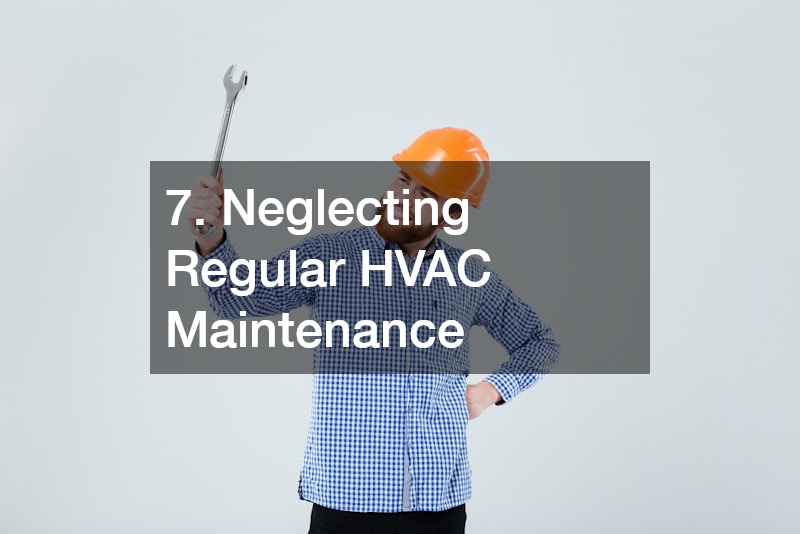
Neglecting regular HVAC maintenance is one of the most common and preventable causes of system failure. HVAC systems require periodic servicing to ensure that all parts are functioning properly and to identify potential problems before they escalate. Without regular maintenance, small issues can quickly develop into larger, more expensive problems that can disrupt your comfort.
How to Prevent It
Schedule Seasonal Maintenance:
Ideally, schedule HVAC maintenance twice a year: once in the spring to prepare for summer cooling and once in the fall to prepare for winter heating. This proactive approach ensures your system is ready for the demands of each season and helps catch any issues before they become serious.
Keep a Maintenance Log:
Keep track of your system’s maintenance history to stay on top of recommended service intervals. Regularly noting service dates and any repairs done can also help you identify recurring issues.
Invest in HVAC Planned Maintenance:
Many HVAC companies offer HVAC services that include planned maintenance packages. These services typically involve scheduled inspections and tune-ups, providing peace of mind that your system is being professionally maintained and is in top working condition year-round.
Replace Old or Worn Parts:
Over time, certain components of your HVAC system, such as belts, filters, and fans, may wear out. Regular maintenance helps spot these issues early, allowing you to replace parts before they fail.
Lubricate Moving Parts:
Mechanical components, such as the blower motor, need to be lubricated to avoid friction, which can lead to wear and tear. A technician can apply lubrication as part of their routine maintenance, ensuring everything runs smoothly.
Clean Coils and Ducts:
Dirty evaporator and condenser coils can cause your system to overheat and function less efficiently. Professional maintenance includes cleaning these coils, as well as clearing any debris from your ducts, which helps improve airflow.
Check for Refrigerant Leaks:
Low refrigerant levels or leaks can cause your system to work harder, reducing efficiency. During a maintenance visit, the technician will check for leaks and top off refrigerant as needed.
What to Do If It Happens
If you’ve neglected maintenance and your HVAC system is showing signs of failure, it’s not too late. Call an HVAC technician to inspect and service your system. They can quickly identify any issues and perform HVAC repairs to restore your system’s performance. If needed, they may recommend a full service or replacement of faulty components to keep your system running efficiently throughout the winter season.
In Closing
Winter can be tough on your HVAC system, but with proper care and attention, you can avoid common issues and ensure your home remains warm and comfortable. Regular maintenance, along with quick action when problems arise, can go a long way in preventing costly repairs and extending the lifespan of your system. By addressing these seven common HVAC problems, you’ll be well on your way to keeping your home cozy all winter long.
